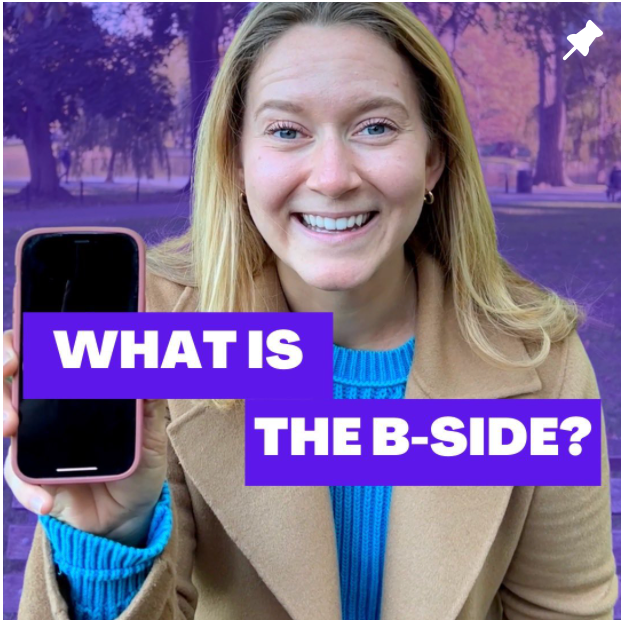Today’s news is ripe with emojis, culture references and gifs

Every Sunday when I was a kid, my father would go outside, grab the Boston Globe Sunday Edition, flip to the sports section and disappear under the vast expanses of words and paper, the only sound from him was the turn of a page. He told me his father would do the same. The solitude, ink on your fingers, eventual reading glasses for the fine print is all but gone today.
Nowadays, news consumption has obviously changed. From Instagram stories to push notifications, daily media consumption has evolved with modern technology. Emily Schario is ensuring that it evolves with generational culture.
The Boston B-Side is a daily newsletter targeted towards a younger, and seemingly female, audience. With its purple filters on the images, emojis next to the lede and cute strategies like analyzing the news in the “shot,” “chaser,” format, it is a fast and easy way to understand what is going on in the giant city of Boston. It is, as Schario’s headlines are, “quick and dirty.”
The writers utilize language that may be unfamiliar to someone in my Dad’s generation, whether that is discussing the “Sunday Scaries” or titling the headline “The best things in November are free,” a reference to a lyric in Taylor Swift’s song “New Romantics” which was re-released a few days prior. To be fair, my Dad is a swiftie, so I have to give him some credit.
Not only is it informative, typically providing the latest on the ever volatile T system in Boston, but it is also useful. Many of the newsletters have “Things to Do” Sections with events around the city, with an emphasis on frugality (like I said, many younger readers).
What is unique about the B-Side is that though it is affiliated with Boston.com and the Boston Globe, it exists as a sole entity. Though there are links, you never have to leave the email to get all the information you need. Newsletters from newspapers as a whole typically just list stories from that week with links, but the B-Side reports stories for a more succinct email format.
As a member of Gen Z and someone who has been described as cynical, I sometimes find it to be a bit cringe. Whether it is the “relatable” millennial-isms or the overemphasis on emojis, I feel as if it is a bit over the top in terms of attempts at personal connection.
A newsletter sent on Oct. 27, a day after the tragic shooting in Lewisville opens with a heartfelt show of support to the community and dedication to bringing a “splash of goodness” to your inbox, yet halfway down has “let’s boo this (sorry)” in the opening of a section about Halloween. The tone and aesthetic and actual content can be somewhat disjointed at points and somewhat off putting.
The generational divide is also evident in a vine reference in an opening of a sports story. I never watched Vine, my only exposure was when a Vine star was on Dancing with the Stars (may be an anomaly in my generation in watching that show). While it is not a make or break detail, for me personally, it doesn’t resonate. Does our generation want writers who really “get us,” and do we just want news as typical reporting?
At the end of a newsletter that mentioned the beauty of fall foliage, she stated “Pro tip: While you’re looking out at the highway foliage, imagine you’re heading to get coffee with Dean from Gilmore Girls.” I have never seen "Gilmore Girls," nor do I want to. Unlike most reporting where the author and reader are far removed from each other and the content, B-Side bridges that gap, though maybe a little too much. It is overly optimistic at points and assumes everyone reading is trying to soak up all the magic of the city, rather than simply get by.
Additionally, there are weird large ads in the middle that are written like another odd story. Everyone hates ads, but it is possible they hate them even more when they initially don’t realize that it is one.
Axios Boston on the other hand is part of the larger Axios chain and has considerably less emojis. With distinct sections and links to longer stories, it is very different from the B-Side, even if the overarching content of Boston politics and T disasters is similar. Though clicking on links will take the reader to another page, it tells you how long the reading will be (1 min. read) so the reader can make an informed decision. Having more sections allows for daily understanding of different Boston sectors whereas the B-Side has more variation day to day.
Ultimately, the B-Side is much more personable and friendly than Axios. The question is whether or not I want to be their friend.
Post a comment